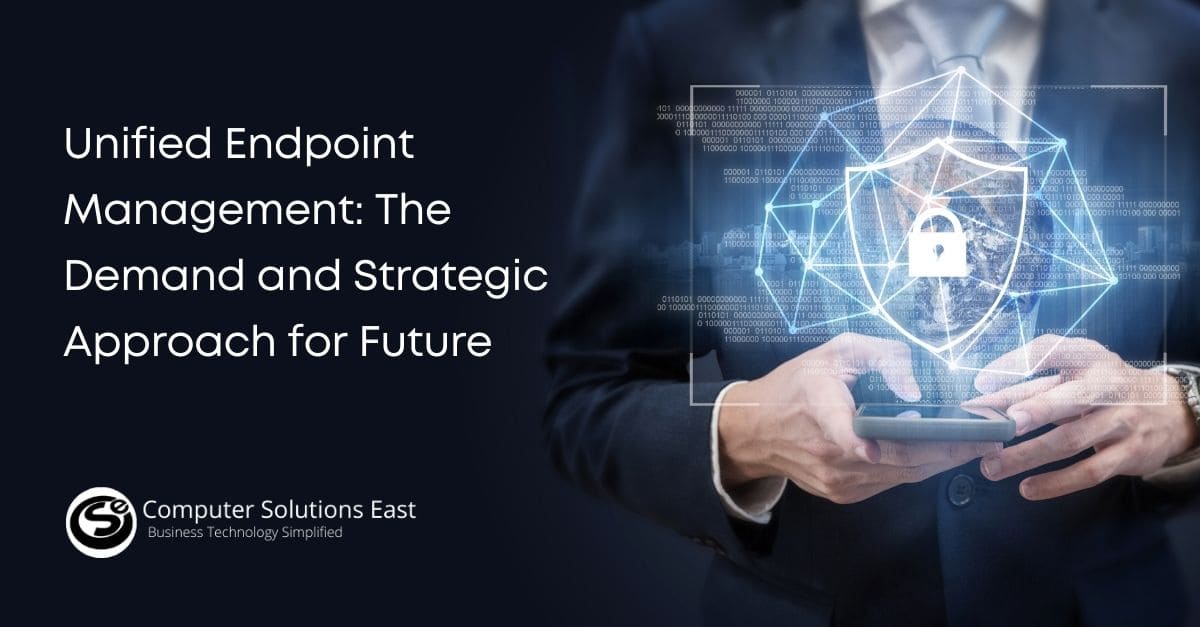Centrally Provision, Monitor, and Secure all Endpoint Devices within your Organization
Running a smooth business in the pacing technological world has become challenging. Protection of critical business data is mandatory in this digital world because cybercrimes, threats, and malware attacks are a common term in this generation. Business owners have asked every employee to secure all your organizational devices and personal devices. In this way, at least the primary methods are off the list for exploitation. Endpoint protection and management are the technical security of any organization.

An endpoint is a remote device that communicates in and out of the network, and physically at the parameter of a system. It includes desktops, laptops, smartphones, tablets, servers, etc. These are the critical points for unauthorized intrusion, as they are the key areas of vulnerabilities. The most successful breaches happen at this point, and hence endpoint protection is fundamental to any organization. Endpoint security software ensures the management and security of user devices while in connection to the network. It is an essential service as devices are increasing in the companies with the introduction of remote working and wireless solutions. There are many methods to simplify cyber threats. They are as follows:
Cyber Threat Management
Cyber threat management is an advanced program enabling early identification of threats, data-driven decision making, and timely warning mitigating actions. The main objective of threat management is the logical union of people and technology to stay ahead of threats. With the steady increase in the number of risks and complexity of the attacks, organizations are subjected to use them. The three common challenges faced by threat management are:
Lack of visibility: The security technicians do not have a transparency of the proper functioning of all the internal (users, databases, and cloud) and external (social media, dark web) sources. This confusion happens due to a lack of undefined or inconsistent processes across the organization.
Lack of insights: The security team does not have proper insights on where the data are flowing through, which makes tracking difficult. If precise monitoring is not possible, alerting the system can be delayed, and the attack would be completed.
Skill shortage and staff burnout: As it is only an emerging sector, skill shortage is present, and due to this, the employees must do additional work. Hiring a certified security consultant is difficult, but a necessary one in today’s world.
Rule-Based Firewall Implementation
At its most basic level, a firewall is designed to block connections from questionable networks. It inspects all connections for their source address, destination IP address, and destination port and determines if a network may be trusted.
For seamless security, source address, source port, and destination and port for simplicity’s sake. This information may be seen as an identifying characteristic of every connection attempt detected by the firewall.
This property is analogous to a set of rules dictating which connections are allowed and which are not. If this defining quality has the same information as an allowed connection, the source address may establish a connection with the approved port’s destination address. Thus, traffic is permitted to enter the network.
As a result, the success of any firewall is usually determined by the rules used to configure it.
The firewall monitors traffic entering and exiting the environment it was designed to protect, providing insight into the kind and source of traffic entering the environment.
Protecting the environment from dangers originating both inside and outside. Assisting security experts that need to determine how a breach entered the firewall as an investigative resource. A firewall ruleset must be enhanced with a successful logging function in order to be most effective.
The logging function keeps track of how the firewall handles various kinds of traffic. These logs include information on the destination IP address addresses, protocols, and open ports, among other things.
Threat Management system
A threat management system is a network hardware program installed into hardware or software for providing multiple security functions. The different types of security it provides:
- Web application security
- Database security
- Messaging security
- Data security
- Telecommunication and network security
- Platform/System security
- Advanced Persistent Threat
The key benefits of threat management systems are
Network visibility and control: Provide real-time insight and the control needed to protect the organization from advanced attacks. It identifies malicious activities and eradicates any infected applications affected by malware.
Endpoint security automation: Provide automated endpoint identification and reduction of advanced threats that can easily dodge endpoints. It can detect infected PCs and mobile devices. It can cut down your endpoint security management expense.
System and device protection: Offers drill down forensic analysis of malware characteristics, behavior, communication, sources, and channel entry, which makes the system protected. It can accommodate the compliance requirement for mobile devices and systems. It keeps the system running smoothly by keeping the network clean.
Regulatory and IT security compliance: Provide necessary controls and reporting capabilities to make the compliance program successful. It detects standardized data leaving the network by any means. It achieves compliance for hard-to-secure systems and devices.
The online protection service is provided by many third-party organizations. We have been providing reliable and affordable services to all the customers so far. We have the best-certified security consultants who are available 24/7 irrespective of the venue. Call us to know more!


